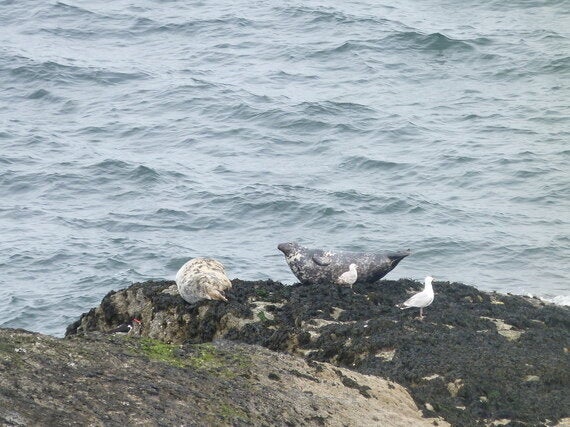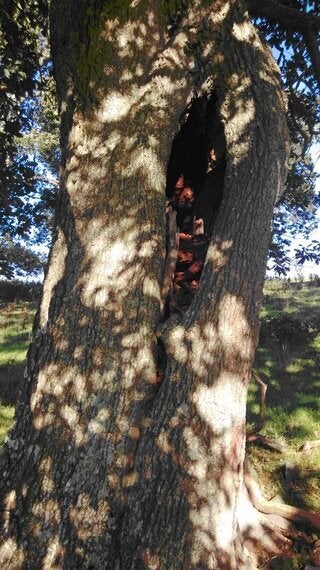As whirling storms lashed our coasts and we clung onto bits of barbed wire fence for dear life as the gorse we had cut sailed off into the air, we realised it might be time to call it a day. This was back in February, when the winter storms had brought trees tumbling down and waves crashing onto promenades, sea walls, cliffs, shingle and sand dunes. Being out trying to work in this weather and dealing with the aftermath can be disheartening. Blakeney, home to more than a thousand harbour seals and grey seals, was battered by the storms and the rangers worked hard to establish how the colony had been hit, along with the damaged shingle which is home to terns arriving to breed in April. Our other seabirds, already struggling from the impacts of overfishing, climate change, pollution and disturbance, succumbed to the storms in great numbers. Guillemots and razorbills were particularly badly hit, unable to feed in turbulent seas with even fish shoals dispersing in the turbid water.

Common seal near Cwm Tydu. Photo: Peter Pimbblet
Pretty much every beach had some birds washed up. At Ashridge, one of the oldest beeches fell along with hundreds of other trees. Some of our ancient and veteran trees succumbed in quite spectacular ways, with their sheer size meaning their falls resulted in a domino effect, the aftermath of which we are still dealing with in some places. These trees, hundreds of years old, support rare beetles, moths and flies as well as epiphytic ferns growing metres above our heads, fungi growing in their hearts and water pools in holes in the braches. Many will hopefully continue to provide fantastic habitat for many years to come - trees coming to the end of their life and falling is quite natural, but we have so few old trees today that every loss is a real blow. We also checked as many of our footpaths as possible - it can be difficult to predict where the next cracked and hanging branch might prove a danger - and it was frustrating to see people walking through very clearly closed off areas, oblivious to the danger around them. I resisted the urge to shout 'DON'T BE SO SILLY!' but they were surprised when I pointed out the tree over the path with a huge crack in it.

Crack in a veteran oak - home to countless beasties. Photo: Gwen Potter
The spring, though, was perfect. Just as an old tree can be aged with hugs, hugging younger trees is a legitimate way to see whether spring is coming. Listening to the sap rising in a young birch or beech in February/March with its rasping, knocking and sucking is a sure sign that spring is on its way, and we heard this in late February. The snowdrops were very early due to the mild (temperature wise) winter, popping up in December in a couple of places and putting a nice bit of early colour into Llanerchaeron woods. Next came the yellow wild daffodils, then oceans of bluebells, and finally seas of wood anemone, their white bobbing heads carpeting the floor. There was one day in the woods - in between a couple of April showers I think, when all the colours were visible. I don't think I've seen a more beautiful spring. By May, the rains returned and so our spring butterflies were in trouble - pearl bordered fritillaries didn't do so well, and neither did our spring moths - early thorn, one of my favourites which looks like a twisted leaf, was less common.

Wood anemones - tiny white stars carpeting ancient woodland. Photo: Gwen Potter
By the summer, our butterflies were doing fantastically well, with enormous silver washed fritillary and mousey dingy skipper dancing in the dry weather. Spectacular continental swallowtails started to colonise the south coast, though only future years and extensive larval surveys will tell us how successful they have been. The hedgerows were full of yellow Welsh poppies and vetches, pignut and celandine. Gorgeous, fuzzy tree bumblebees have been in the UK for a good few years, but the extended coverage of them in the media has resulted in record sightings as they continue their march north. The dolphins of Cardigan Bay, ever present but not always visible, were constantly spotted from Mwnt this year, with guaranteed sightings nearly every morning. Our meadows hummed with life, insects and flowers enjoying the extended summer, however late downpours put paid to the butterfly season early. Our songbirds will also have appreciated the warm weather which reached into autumn, with early berries in a glut. Wild damsons, blackberries and sloes galore were plentiful while holly berries were very early. Berry eating birds looking to fatten up for winter will have been having a great time. Oak mast, however, was much reduced as the bumper year last year meant fewer nuts this year, so fewer snacks for jays or squirrels. It's the jays and squirrels that drive this tree 'behaviour' - if all the oaks produce a glut one year, then some will survive acorn feeding animals. In other years the reduced amount of food will make it harder for those same animals to find food - a great evolutionary strategy on the part of the tree.

Peacock on meadowsweet - one of the butterflies that did well this summer. Photo: Gwen Potter
The full autumn, however, seems to have disappeared in a flash - the leaves clung on and stayed green and then most were blown away in a October gale. The full winter look won't arrive until a proper frost, which we haven't had yet in the west. It's possible we'll have a very mild or a very snowy winter. In an extreme season (and what was this if not a year of extremes?) there will be winners and losers, with some being both in one year - the calm weather brought bumper amounts of seals pupping in the autumn, if a little later than usual. Let's hope these high numbers will make up for some of the losses earlier in the year. The fungi in the woods were doing well in the usually moist environment, but the waxcaps and grassland fungi from my last blog struggled, possibly due to the drier weather. Never mind - as you no doubt already know, the fruiting bodies are safe underground, as are our seeds, our newts, our adders and our caterpillars, just waiting for the spring to return...